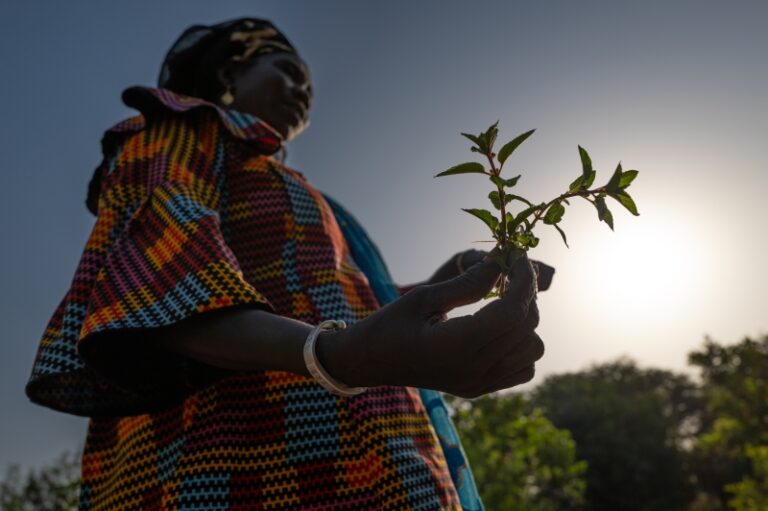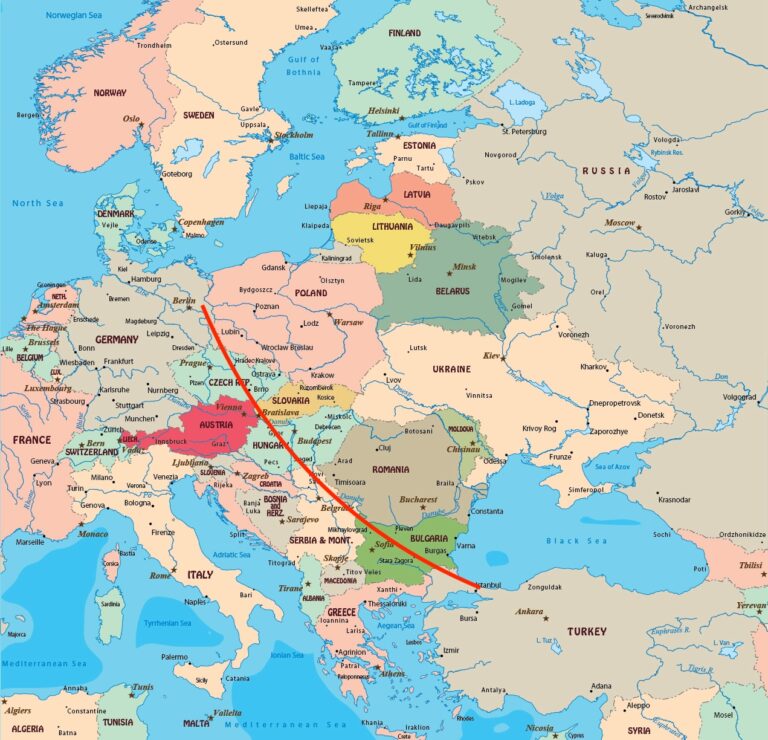Every time Jeandarque Sambou walks into her vegetable garden in central Senegal, a region struggling with desertification, the sight of this green oasis gives her spirits a lift.
“If I go into the garden, if I open the gate, I enter with joy,” Sambou said while taking a break from drawing water from a well. “I never thought I could do all the things that I have done here.”
Sambou is one of tens of thousands of smallholder farmers in Sub-Saharan Africa who have established tree-dotted “forest gardens” with assistance from Trees for the Future (TREES), a non-profit group. The initiative, say those involved, is helping to diversify food and income sources, making families more resilient, and pushing back against land degradation.
In recognition of its benefits for people and nature, the initiative was recently designated a United Nations World Restoration Flagship. The award, part of the UN Decade on Ecosystem Restoration, is designed to showcase efforts that are reviving the natural world.
“Initiatives like TREES are playing an important role in reversing decades of ecosystem degradation, especially across the Sahel, pushing back desertification, increasing climate resilience and improving the well-being of farmers and their communities,” said Inger Andersen, Executive Director of the UN Environment Programme (UNEP). UNEP coordinates the Decade on Ecosystem Restoration along with the UN Food and Agriculture Organization.
Building resilience
Land degradation – referred to as desertification in drylands – affects communities across Sub-Saharan Africa. Falling soil fertility is undermining crop yields and livelihoods, and the ability of countries to feed their fast-growing populations. Amid alarm that climate change will intensify the problem, Africa is fighting back, including through restoration initiatives like TREES and the sweeping Great Green Wall project.
TREES’ “forest garden” model combines agroforestry – which incorporates trees and shrubs into agricultural systems – with sustainable farming practices. The goal is to build soil fertility and boost the yields of smallholder farmers. Experts say that is crucial to countering poverty and helping communities become more resilient to the impacts of climate change, including droughts, floods and storms.

Over a four-year period, families participating in a TREES programme receive training, seeds and tools to help them establish forest gardens on their often-small plots of land.
Since 2014, the initiative reports that it has supported 50,000 households in Kenya, Mali, Senegal, Tanzania and Uganda.
As a World Restoration Flagship, TREES will now be eligible for technical and financial support from the UN. TREES officials say they are aiming to restore 2,290 square kilometres by 2030.
Since trees scrub carbon dioxide from the air, the initiative is also expected to capture 80 million metric tonnes of the greenhouse gas over 20 years.
Stable supplies
In Fatick, a region about 120 kilometres southeast of Dakar, TREES reports that is has helped more than 1,000 families, including Sambou’s.
Many farmers in Fatick depend on a single growing season for rain-fed crops, such as peanuts and millet, leaving them vulnerable to the vagaries of both the climate and market prices.

Forest gardens are designed to provide families with a year-round supply of fruits, vegetables and other resources, including timber and firewood, for their own use and for sale.
Related

Story
Therapy for the spine of South America
By regreening the landscape, the gardens offset local deforestation. They also contribute to global efforts to conserve biodiversity, counter climate change and improve the health of soils. TREES says its projects have already planted 100 million trees around the world.
According to Fatoumata Diehiou, the regional coordinator for TREES in Fatick, the initiative is also helping to stem the migration of young people from Senegal’s rural communities.
“Someone who finds work in their own region, in their country, will not go elsewhere,” Diehiou said.
Life insurance
In the beds of her neatly laid out garden, Sambou grows vegetables including cabbage, potatoes and onions as well as hibiscus – a red flower widely used in West Africa to flavour jellies, jams and drinks.
“I don’t buy any more onions, capsicum or other vegetables. The forest garden has given us everything,” she said.

It’s not all been plain sailing. In the first year, hungry livestock broke through Sambou’s fence and destroyed her crops. Now she reinforces the boundary with thorn-laden branches cut from acacia trees, whose leaves and roots also deliver nutrients to her soil.
“I take care of my garden like I take care of my children,” she said.
The skills that her family has acquired have become a form of insurance against whatever the future may bring.
“Everything I do in the garden, my children know about it,” Sambou said. “So, today or tomorrow, if I am not there, my children will not suffer.”
About the UN Decade on Ecosystem Restoration
The United Nations General Assembly has declared the years 2021 through 2030 the UN Decade on Ecosystem Restoration. Led by the UN Environment Programme and the Food and Agriculture Organization of the UN, together with the support of partners, it is designed to prevent, halt, and reverse the loss and degradation of ecosystems worldwide. It aims at reviving billions of hectares, covering terrestrial as well as aquatic ecosystems. A global call to action, the UN Decade draws together political support, scientific research, and financial muscle to massively scale up restoration.
Source: www.unep.org




